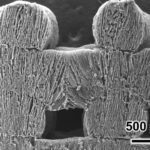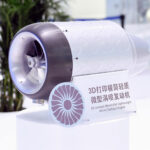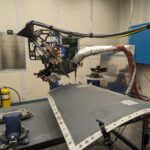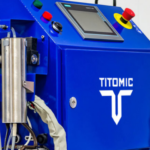Due to increasing urbanization, the coast of Sydney lost large sections of mangrove jungle for the past 200 years. As a result, much of the marine life on the coast was losing much of its habitat, taking with it the natural purifying effect it had on the water. Enter Volvo with a bold and innovative 3D printing solution. Volvo’s living seawall tiles integrate with marine life on a whole new level.
This initiative is a joint project with North Sydney Council, the Sydney Institute of Marine Science, and Reef Design Lab, a Melbourne-based designer of marine habitat infrastructure. With the loss of so many mangrove trees, the dependant marine life were all exiting the area. To remedy this, the researchers decided to build structures that promote growth for mangrove trees and the return of sea-life.
“We’ve lost 50 percent of the world’s mangrove forests, and in their place, we’ve built things like seawalls, which proliferate around Sydney Harbour. Tearing down the seawalls is not viable,” said Nick Connor, Managing Director of Volvo Car Australia. “There’s a Swedish word, omtanke, that means ‘caring’ and ‘consideration.’ I think that really captures what we’re trying to achieve with the Living Seawall, and it sums up Volvo’s approach to sustainability in general. We’re always trying to rethink, reinvent, redesign for the better.”
Aiding Marine Biodiversity
The tiling also takes its cues from biomimicry, simulating ocean habitats. Each hexagonal tile incorporates and holds together the structure of the mangrove roots. The underside of the tiles has a far more complex design that attracts microorganisms. Cast from 3D printed moulds, the tiles employ a mixture of cement and recycled plastic. The layers match the texture of the oysters, which helps them grow into the tiling. This is great because they can act as one of the filtering organisms the program wanted to bring back.
The initiative is another example of how 3D printing can recover and preserve various habitats. Aside from the main purpose of the living seawall tiles, there is an additional component that plays well with the environment. The plastic the researchers employed is recycled, making use of existing waste as opposed to creation of new plastics.
This isn’t Volvo’s first foray into eco-awareness. The company already committed to an embargo of single-use plastic across all offices, canteens, factories and events starting 2020. While there is a lot of work remaining, it’s good to see major international companies taking a first step. There are plenty of other spots in the world that could use structures like living seawall tiles.
Featured image courtesy of Volvo










